Hello,
We have a case that we need to call an external API which is not ABP module. Which layer should we place the service? I assume that we need to behave like it is a application service and create DTOs, interfaces accordingly. What is the best practice? Do you have an example?
Thanks.
Hello,
I have an aggregate root - value object relationship on my module. As you can see there are profile aggregate root and edge definition value object
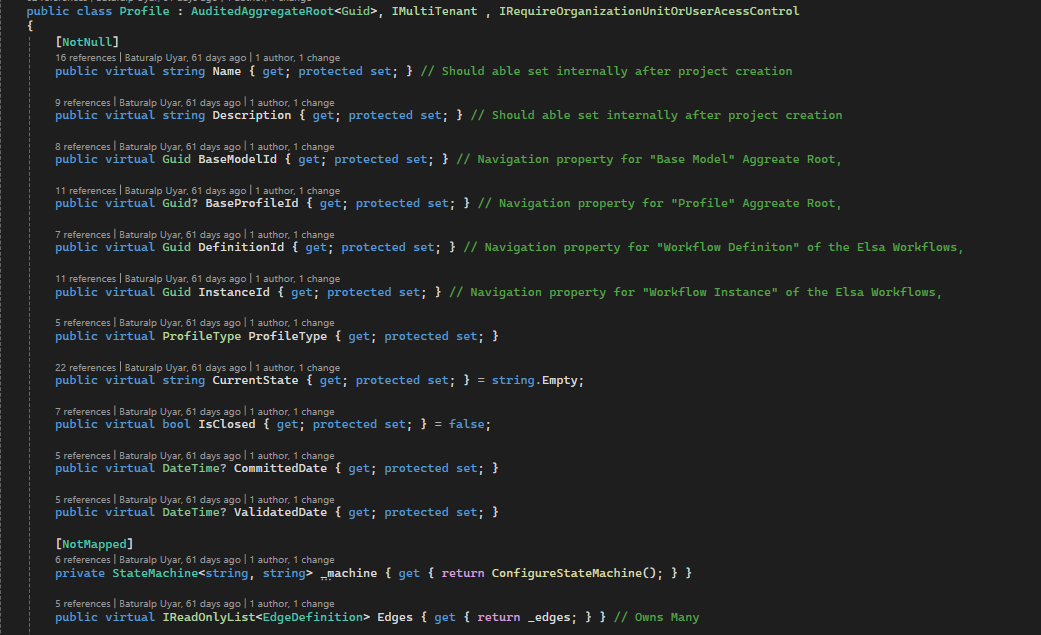
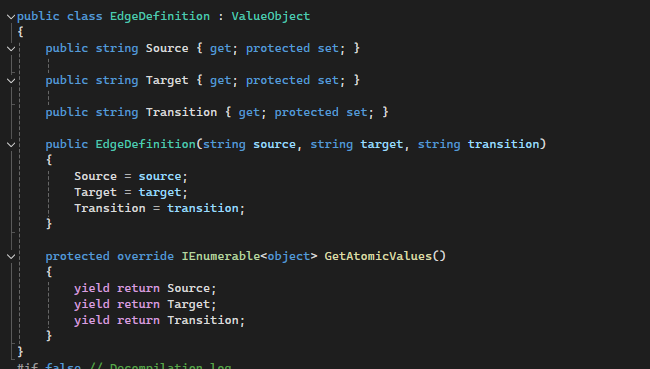 Relationship has been described in EFCore like this. I use owns many relationship between Profile and EdgeDefinition.
Relationship has been described in EFCore like this. I use owns many relationship between Profile and EdgeDefinition.
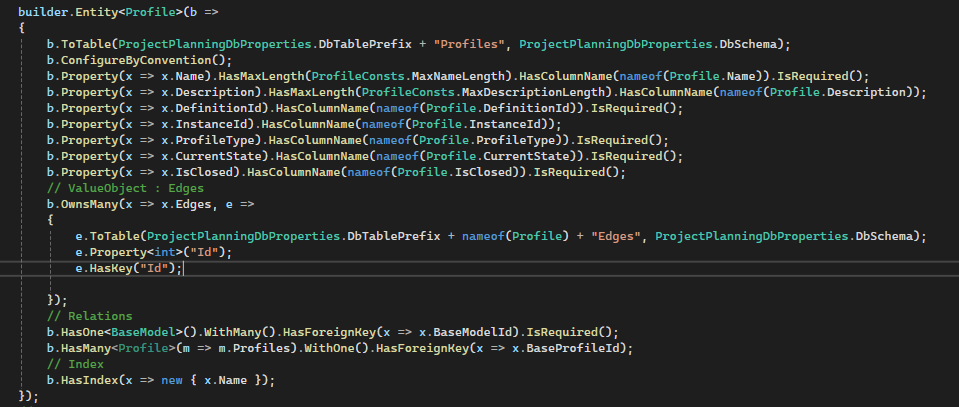 I have a method that creates multiple profiles according to input that is sent in ProfileAppService.
I have a method that creates multiple profiles according to input that is sent in ProfileAppService.
 When I create two profiles, two entitites, I see that only one edge information on my local db and it is assigned to latest profile. So I examine the EF core logs it seems that InsertMany create a single edge definition and updates the FK with the latest one. It is a really strange behavior because I expect that it should create single value object for each profile. To give an example. I sent two ids for profile and it creates two profiles, but I can only see the latest one on edge definition table.
When I create two profiles, two entitites, I see that only one edge information on my local db and it is assigned to latest profile. So I examine the EF core logs it seems that InsertMany create a single edge definition and updates the FK with the latest one. It is a really strange behavior because I expect that it should create single value object for each profile. To give an example. I sent two ids for profile and it creates two profiles, but I can only see the latest one on edge definition table.

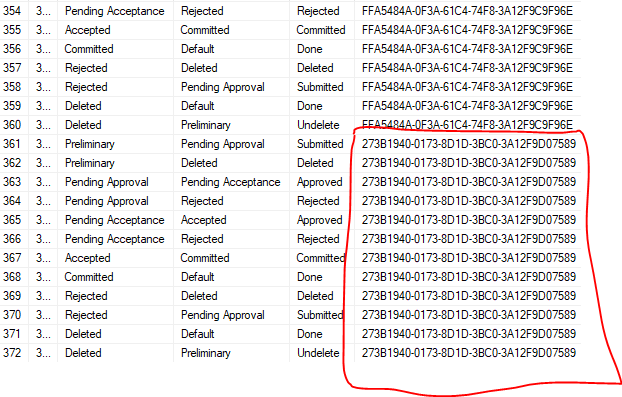 Since it is a long log file I could not send it. But you can see that it changes the ProfileId value while inserting it.
Since it is a long log file I could not send it. But you can see that it changes the ProfileId value while inserting it.
2024-06-05 12:03:44.113 +03:00 [DBG] The foreign key property 'EdgeDefinition.ProfileId' was detected as changed from '"dd9c0686-7486-c122-0940-3a12f9cb4247"' to '"273b1940-0173-8d1d-3bc0-3a12f9d07589"' for entity with key '{Id: 372}'.
I just want to see that if it works InsertAsync method with autosave but there is same issue.
 It seems it could not save the transaction. The only thing works when we create a new unit of work. It basically creates edge definition for each profile.
It seems it could not save the transaction. The only thing works when we create a new unit of work. It basically creates edge definition for each profile.
 It seems it is a really strange problem even though we want to save it with autosave. I just want to use InsertMany method but it does not work. Do you have any idea why it happens?
It seems it is a really strange problem even though we want to save it with autosave. I just want to use InsertMany method but it does not work. Do you have any idea why it happens?
Hi all,
We've followed your documentation when we integrated it in our module. We use the FileSystem option. After upgrading the solution 7.3 to 8.1, we have an exception on docs module. So we've created application template solution from scratch to see whether we have the same case.
INSERT [dbo].[DocsProjects] ([Id], [Name], [ShortName], [Format], [DefaultDocumentName], [NavigationDocumentName], [MinimumVersion], [DocumentStoreType], [ExtraProperties], [MainWebsiteUrl], [LatestVersionBranchName], [ParametersDocumentName], [ConcurrencyStamp]) VALUES (N'12321123-e08e-4f15-bedb-ae0b2d939659', N'ABP framework (FileSystem)', N'abp', N'md', N'Index', N'docs-nav.json', NULL, N'FileSystem', N'{"Path":"C:\\Github\\abp\\docs"}', N'/', NULL, N'', N'2f836e13a2084c3fb720a4d586a11f9a')
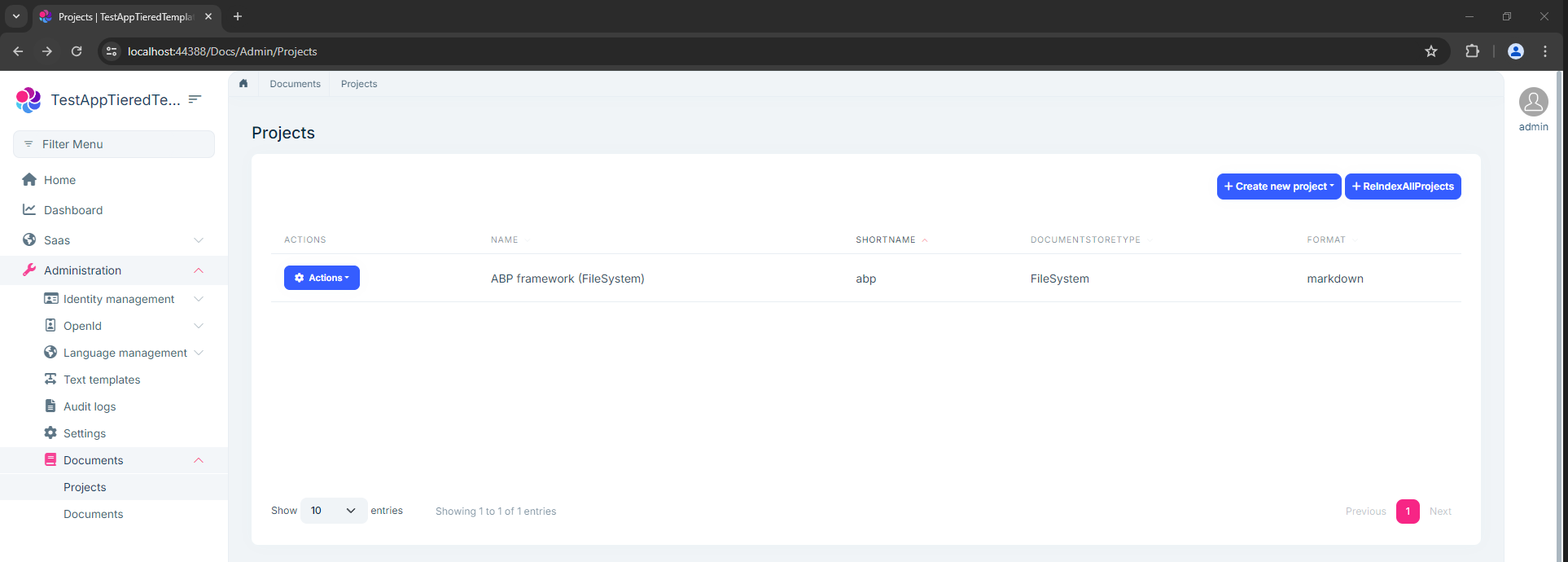
How to solve that issue on v8.1.1?
Hello, After we upgraded ABP v8.1.1, we got "Tenant not found! There is no tenant with the tenant id or name: a3e378cf-c315-7b7e-da30-3a12881a6c2a" exception while trying to login the application via Web.Host project. We've been using the application without redis so we've disabled it.
"Redis": {
"IsEnabled": "false",
"Configuration": "127.0.0.1"
},
When we enable the redis, there is no problem. We are able to login. So I've decided creating a new module project on abp suite to test the same thing.

Hello, We want to change "entityTypeFullName" property on entity changes in audit logging module. I assume that it is retrieved from the namespace. We don't want to change the namespace for that. How we are going to change this value while adding the record?
Hello all,
We want to send an email confirmation token from Angular app and we want to use MVC keyword(AuthServer confirmation page) for that (not separate Angular UI). Before that, I've wanted to try it on HttpApi.Host. We've added Volo.Abp.Account.Pro.Public.HttpApi dependency in HttpApi module. I am able to see the endpoints on swagger UI
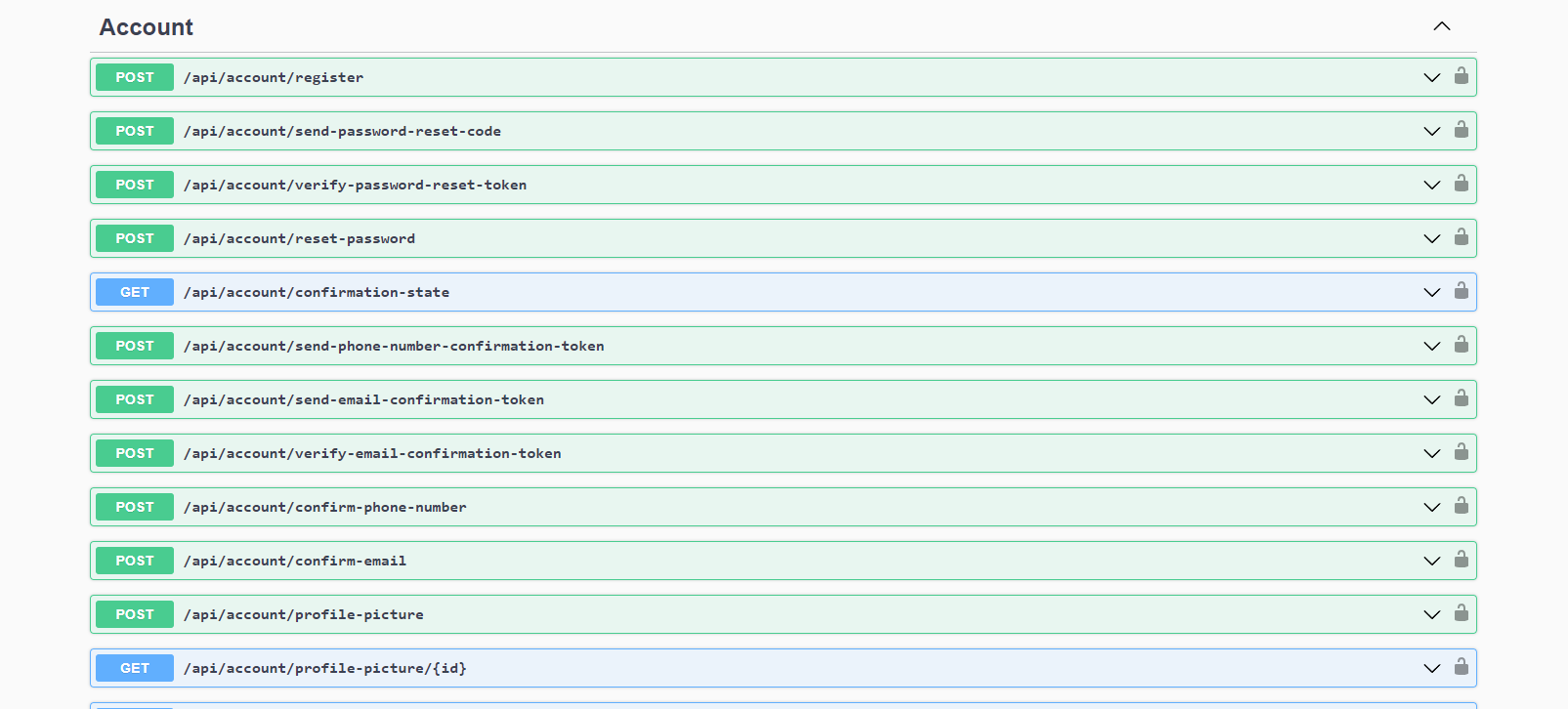 After that, when we call the send-email-confirmation-token from the HttpApi.Host, I see that there is empty url in the email.
After that, when we call the send-email-confirmation-token from the HttpApi.Host, I see that there is empty url in the email.

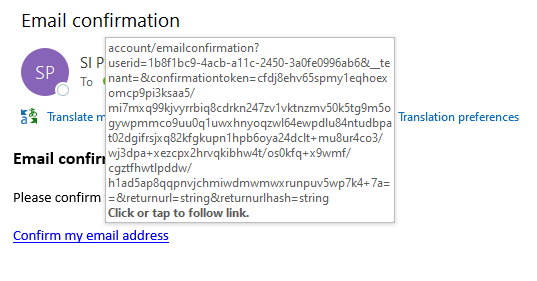 To achieve that problem, I've added the AbpUrlOptions to HttpApi.Host module to set the RoorUrl for "MVC" keyword and give the AuthServer url since email confirmation page is here. Swagger authority is set as AuthServer url.
To achieve that problem, I've added the AbpUrlOptions to HttpApi.Host module to set the RoorUrl for "MVC" keyword and give the AuthServer url since email confirmation page is here. Swagger authority is set as AuthServer url.
 When I try it on my local, everything works fine but it does not work for the docker containers. I get the error invalid token even though the link is correct.
When I try it on my local, everything works fine but it does not work for the docker containers. I get the error invalid token even though the link is correct.
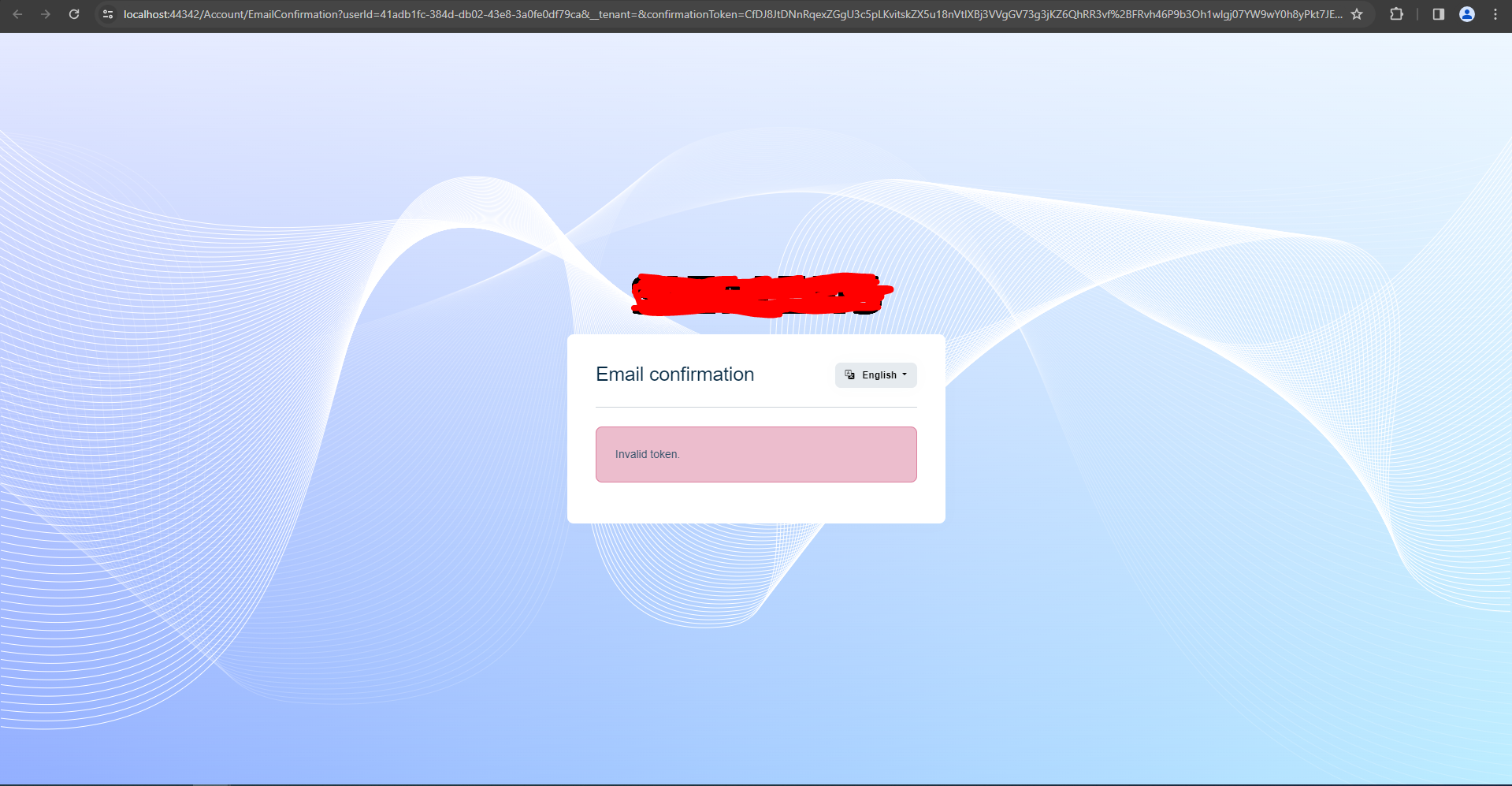
How can I solve that problem?
Hello,
As I've mentioned here , I call the file management app service, which is implemented on AuthService as if it is a microservice, on my domain service by using remote service call. I use static proxy scripts to achieve that. When I call it, I get an authorization error since we don't have httpContext access on background job. I implement AbpHttpClientIdentityModelWebModule on HttpApi.Host to pass the current token to authorization header (not using the AbpHttpClientIdentityModelModule with client_credentials flow)
Here is the part of my domain service method (ExportAsBaseModelAsync) which uses fileDescriptorAppService:

Here is the error log on HttpApi.Host and AuthServer


How can I send the request behalf of the user with current token? Is there a way to do that magically like ApplicationService methods?
Hello,
I have a X module and I want to call one of its API on Y module in domain service. I want to use Synchronous Communication. Since the interface is in X.Application.Contracts and give the reference on Y.Application.Contracts, I am not able to use it in domain service. What is the best practice to call ABP module API in domain service?
Thanks
Hello all,
We've been trying to make our OSS clearing. Our OSS clearing team have found @transloadit/prettier-bytes package which has a confusing license issue and said that it could be risky to use it for customers since it has AGPL license. When I look into the package-lock.json file of xx.IdentityServer project, I can see that it comes from @volo/account not directly but it's subcomponents.




When I examine the source code of the package, I see that the main source code has AGPL-v3 license. But when I go the packages folder and find the prettier-bytes folder, it is written as MIT license. https://github.com/transloadit/monolib/tree/%40transloadit/prettier-bytes%400.0.7. Also, when I search it on npm, I can confirm that it has MIT license for this version. Our team thinks that AGPL license overwrites MIT since the main source code has AGPL license. I know it is a strange case but I want to know your opinion or approach. We don't want to open our repository to public, of course. Is it safe to use it for end customers? What do you think about this issue?
Hello all,
I've wanted to use IIdentityRoleAppService to add roles, get roles etc. in my app service but somehow I have not been able to use it. I've examined the https://support.abp.io/QA/Questions/2785/Consume-external-REST-API-to-get-data issue to see how to use different application services in the app service. I've followed three steps that mentioned. I've ended up with "unauthorized error" even though I've had the right permissions. Here are the steps to reproduce the issue:
abp new TestAppForRoleAppService -t module-pro --add-to-solution-file --output-folder C:\Users\TestAppForRoleAppService --version 5.3.3Volo.Abp.Identity.Pro.Application.Contracts 5.3.3 package in TestAppForRoleAppService.Application.Contracts to get the interfaces.Volo.Abp.Identity.Pro.HttpApi.Client package in TestAppForRoleAppService.HttpApi.Host and insert it in module dependencies



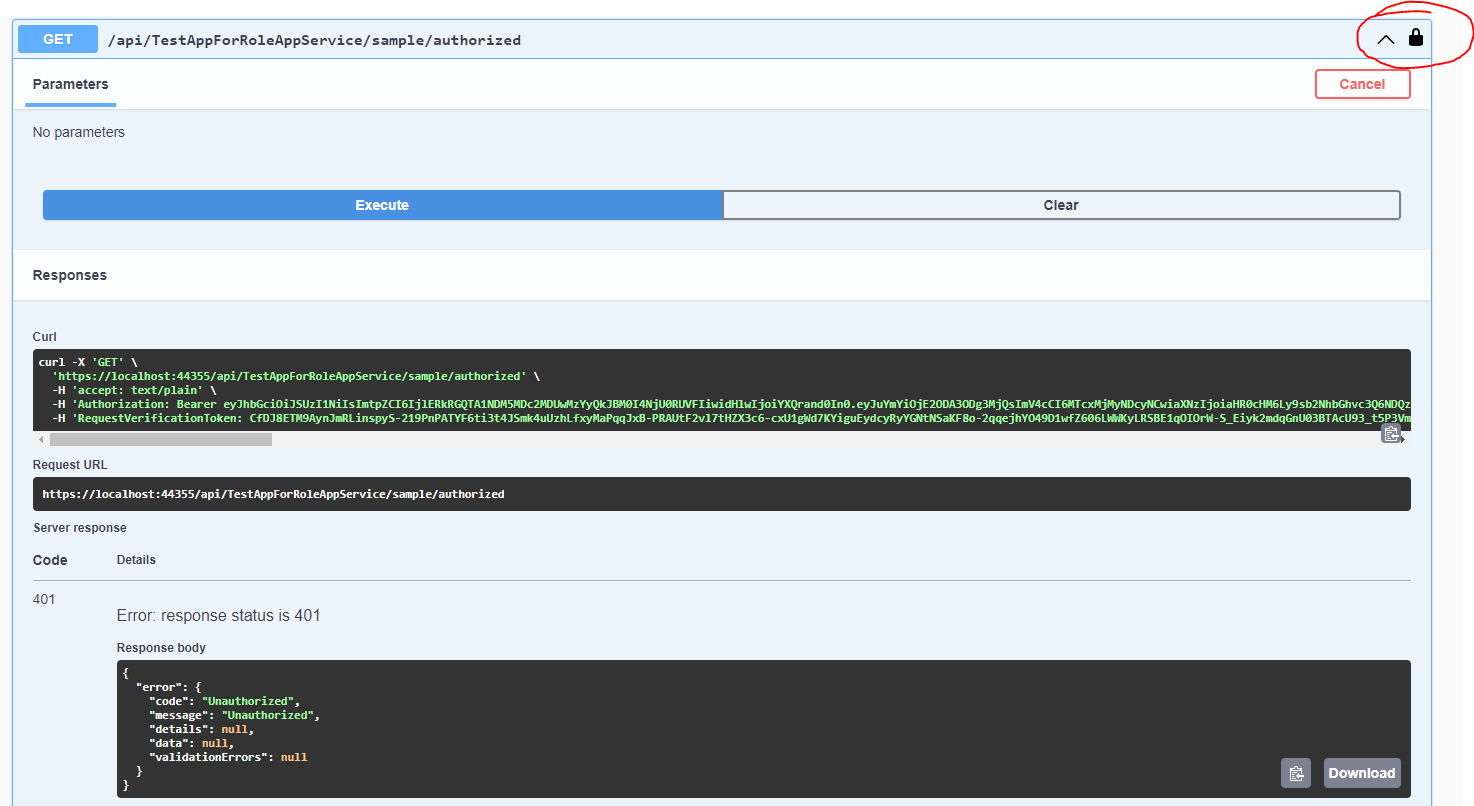


Am I missing something to use the app service in another app service or is it kind a bug for the module template?
Thanks. Kind Regards

